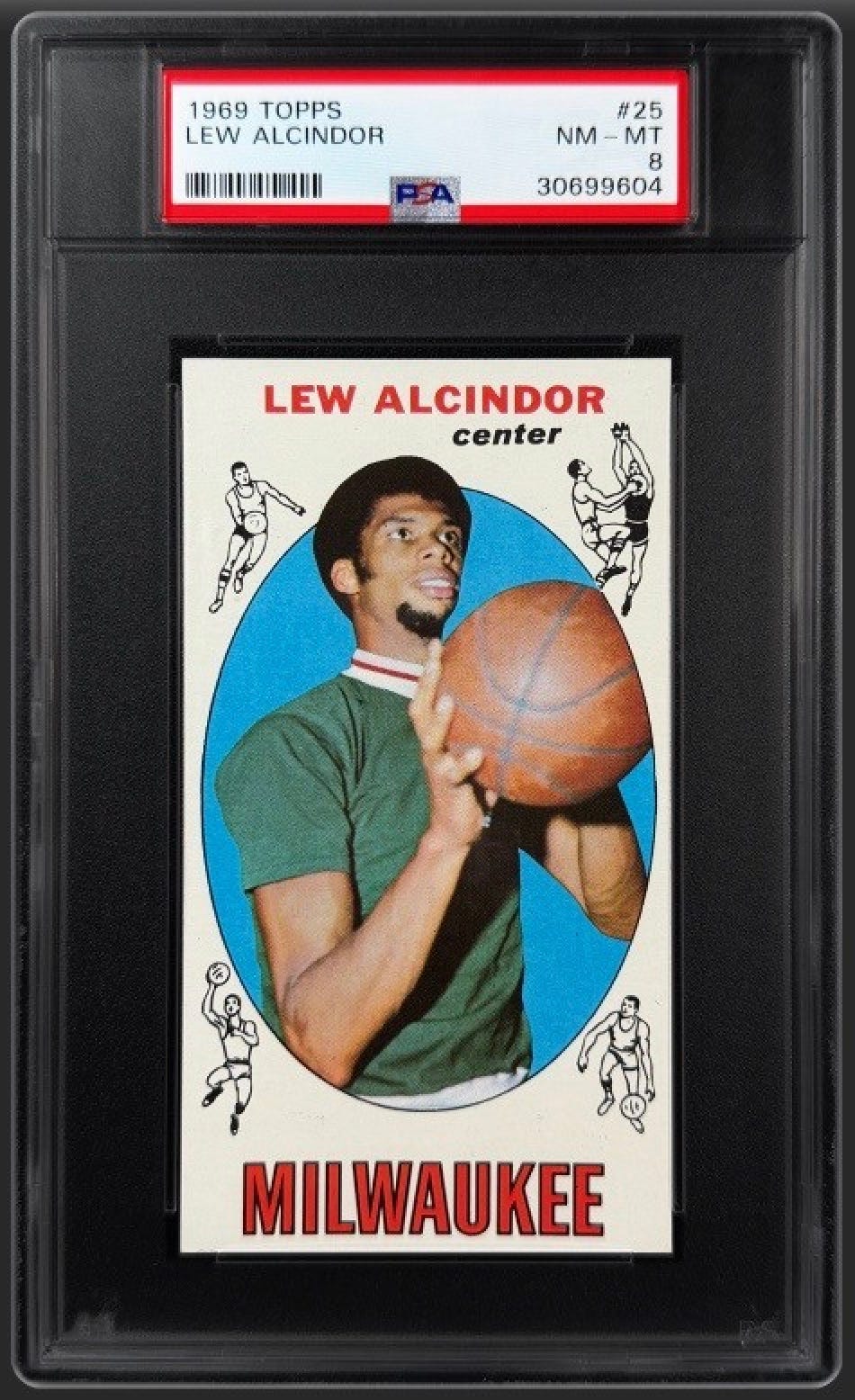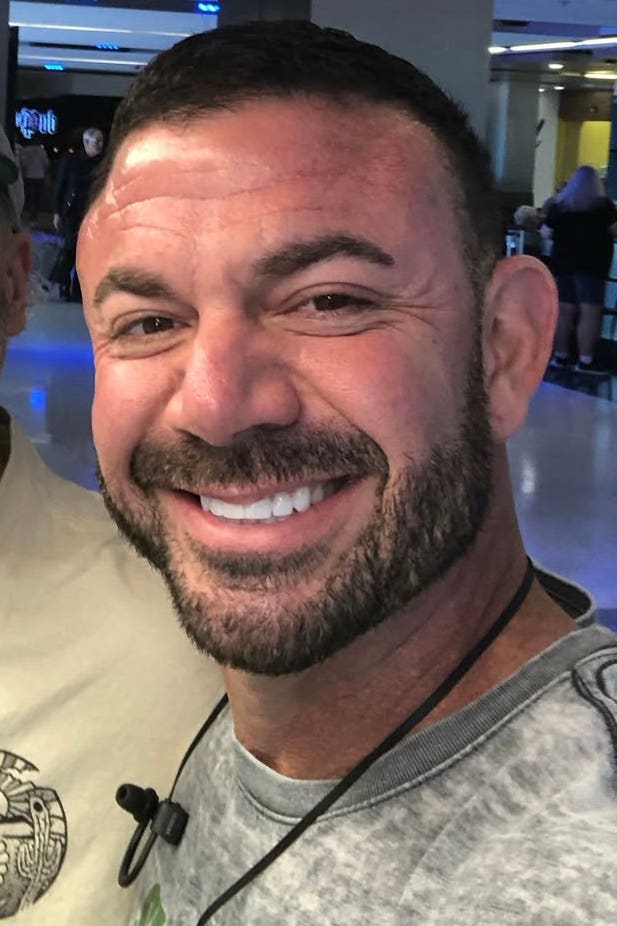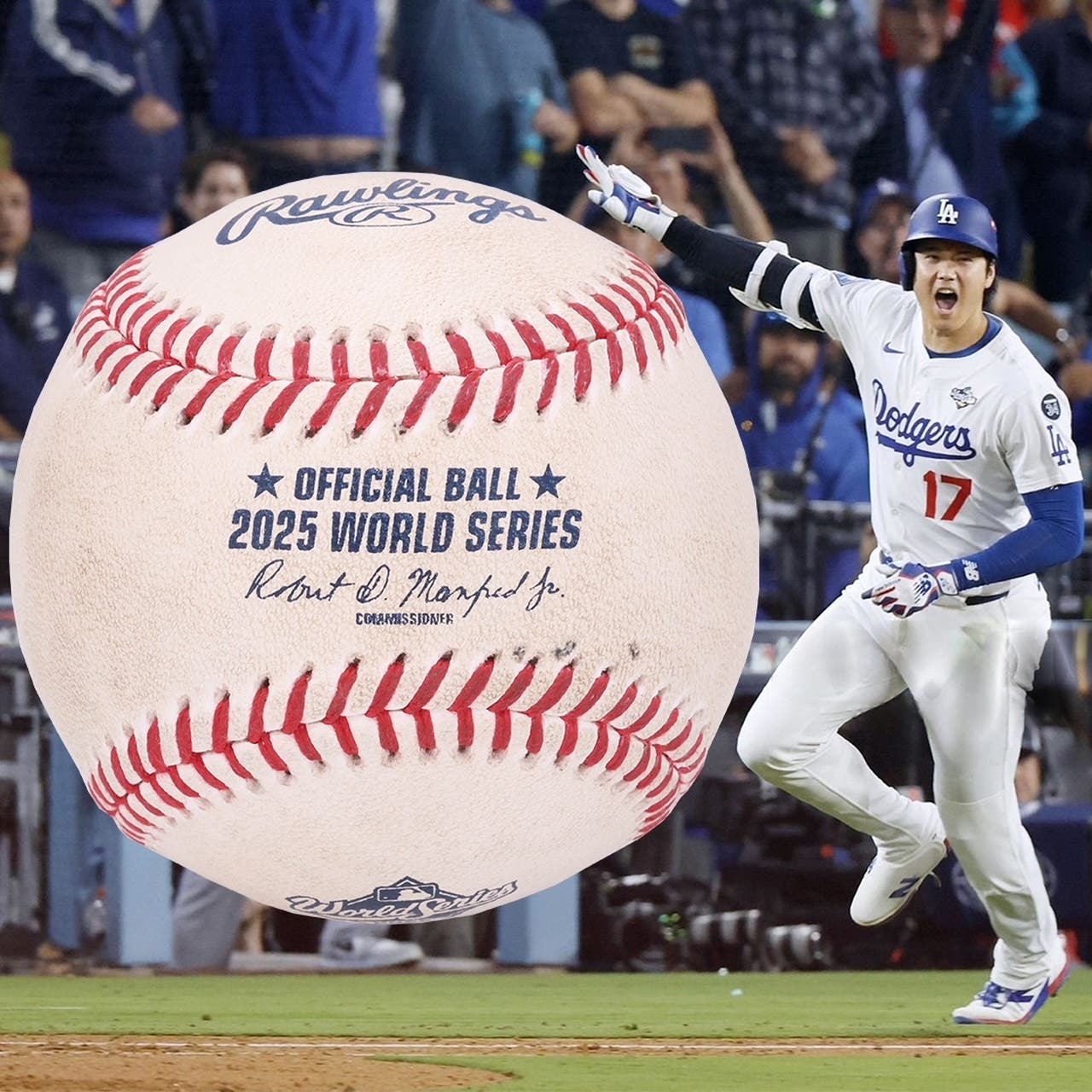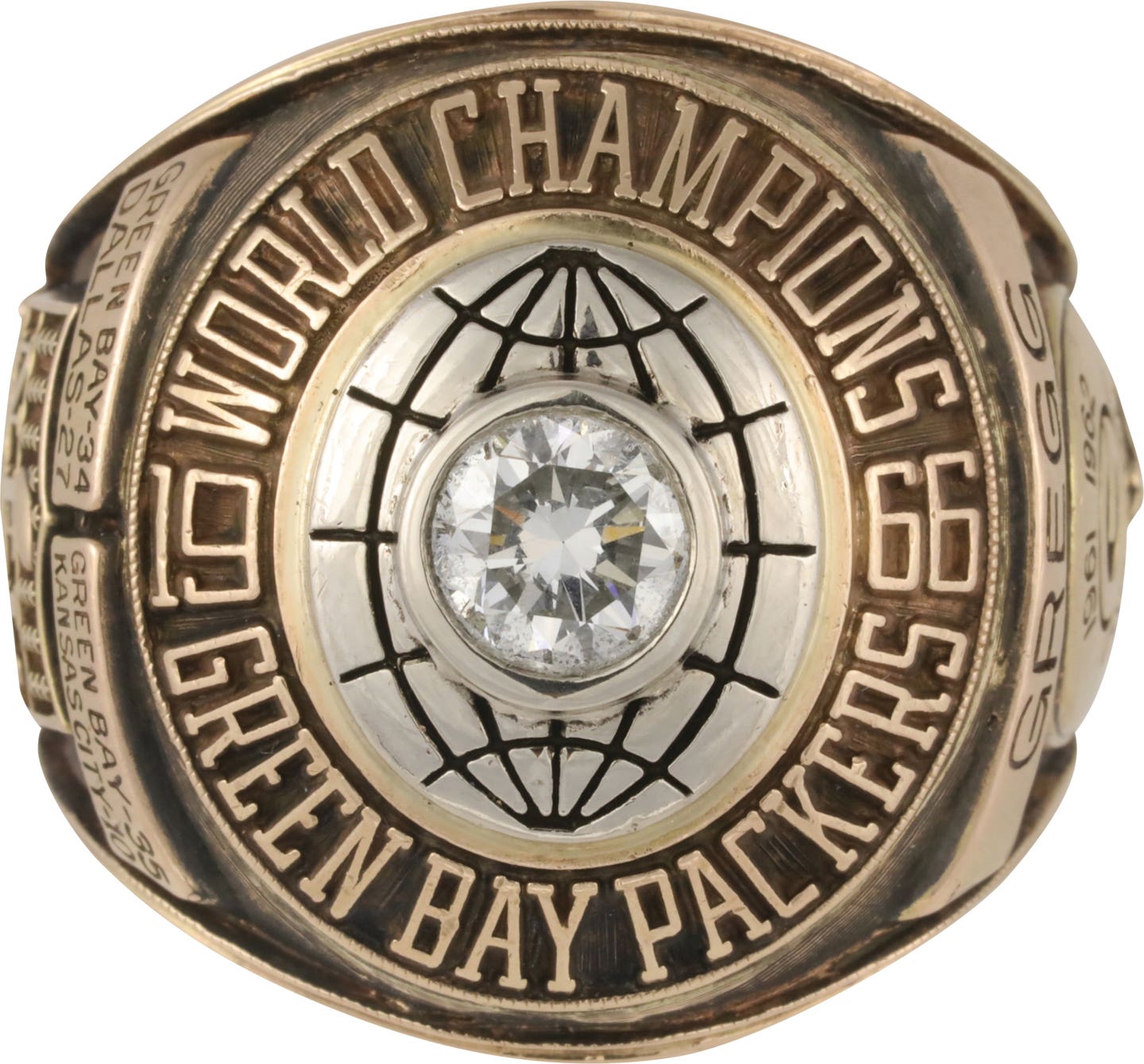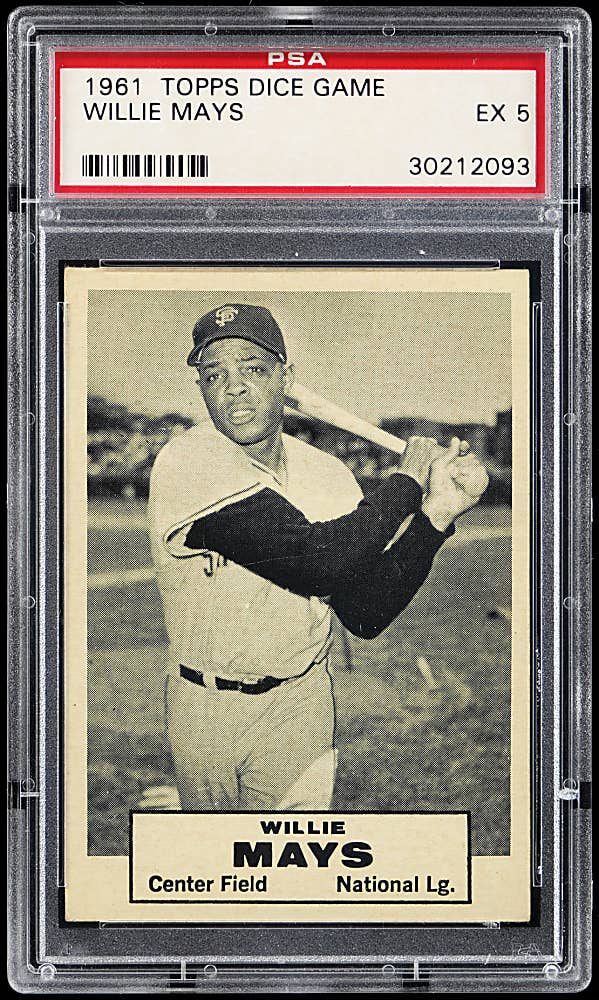Collecting 101
McFarlane’s statues without limitations
Todd McFarlane's involvement in sports goes beyond producing sports figures for collectors. McFarlane readily concedes he is a collector himself, and he garnered big headlines when he purchased the record-setting Mark McGwire home run baseball a few years back. In the second and concluding installment in a two-part feature on the famed creator of the incredibly lifelike figures, McFarlane talks about the early years of McFarlane's Sports Picks, his own penchant for collecting and some of the ideas for the future of his popular company. The first part of this interview appeared in the Dec. 15 issue of SCD (last week).
SCD: What are some of the things that you collect? What are your favorite trading cards and sets?
Todd McFarlane: I collect old 7-11 Slurpee cups from the early 1970s. I have a big affinity for 3-D baseball and football cards. All the Kellogg's sets. With 1971 being the best of the sets because that was the only year you couldn't send in box tops and get the whole set mailed to you. So that's a tough one to put together in high-grade. And there aren't that many Gem Mint 10s floating around. If you take a look at the Population Report on that set, there are actually, I think, 25 out of the 75 cards in that set that have never been graded a 10. It's a tough set.
There is a game I used to play when I was a kid. I bought the baseball version, but they made other ones, by a company named APBA. It was sort of a dice-rolling game that was based on math permutations of recreating stats that had just happened the year before. It was probably equivalent to the code writing that they do today for video games. It's a game that came out in 1950. I bought my first set in 1973. They made baseball and golf, and even horse racing. So I have been buying all the goofy stuff to check it all out and see how it works, both the computer version and the card version. But the old card sets from the 1950s that are in short supply, especially in mint condition, I have a few of those.
SCD: Do you still buy those types of games?
TM: Oh, yeah.
SCD: Do you still play those types of games?
TM: Oh, yeah. I am replaying the 1971 NFL football season right now.
SCD: A couple years ago at the Hawaii Trade Conference, you told a story about the Mark McGwire baseball you bought, that one of your favorite aspects of owning it was that you could pick on your brother because he didn't have one. Can you elaborate on that?
TM: I have a brother a year younger, and a brother a year older. We moved around a lot, so we were very chummy. We sort of had a love-hate relationship. One of the things that we did, was we all sort of had common interests because we all collected stuff. Once one guy collected bubble gum cards, we all did. One guy jumped to football, and we all started collecting football. But we never let anybody get the edge on it. As we got older, the set became bigger, and cost got a little bit more. I happened to get a little bit of dumb luck on my side so I was able to afford a few more things than they could. So they would tell me if they had the money they would get those too. They would have done the same thing to me. I bought something on eBay, and I told my brother, 'Guess what I got today that you don't have?'
SCD: So it's a friendly rivalry?
TM: Oh, yeah. We all still have our collections at home. I gave a bunch of my stuff away when I went to college, so my brothers have some of my stuff in their collections. They both have pretty decent collections; unlike the story of mom took it and threw it in the garbage. We had no idea, other than we were just anal and very competitive, so we kept it all in good condition because it seemed like the right thing to do. Lo and behold, years later, mom didn't throw our stuff out, we kept it.
SCD: In Hawaii, you also mentioned that after you bought the McGwire ball, you were almost broke, but it was a gamble to gain publicity and to try to get the sports licenses you needed. Why did you spend so much on the ball? Was it just a marketing ploy, or were there other factors?
TM: If you look at it, there is the marketing aspect and getting the attention and all that. But at the core of it, it's just a cool boyish fan. I mean you have to justify that part of you sometimes. So you have to say, 'No, no, no, it's good for business.' Because to just say you want it because you are a geek is troublesome to a lot of people. I say a lot of things to a lot of people, and they will say, 'OK, Todd, whatever tickles your fancy.' All of a sudden you are successful like me, and they call you eccentric. At the core of it, it was just cool to have the ball.
We used to go to the drag races when I was a kid at Orange County International Raceway when it existed. We used to watch the Funny Cars and the dragsters. I was really enamored with the Funny Cars. I was at a swap meet, if you will, for auto parts in Portland, when we were living in the Portland area in the early 1990s. Some guy had a used Funny Car on a trailer for sale. He wanted $10,000. To me, I thought a Funny Car was like a million dollars. I thought, '$10,000 for a Funny Car. Oh, my God, it would be the coolest thing to have a Funny Car.' By the time I was done walking around, I had come up with a reason to tell my wife it would be good for business.
So I end up buying the Funny Car. We end up painting the Spawn logo on it. We end up making the Mattel Hot Wheels out of it. We end up taking it to shows and have it be the main centerpiece of our booth. But minus all that, it was just cool I had a Funny Car.
I was able to get on the phone with my brothers and tell them, 'Guess what I got.' We collected cars, loved the races, and loved the Funny Cars. That's why we collected Hot Wheels. I'm like, 'Are you out of your mind, I have a Funny Car. It's just cool. Who cares if it doesn't run? Who cares if I'm not racing it down the track? I have a Funny Car.' It's just a big toy at that point.
SCD: Are you going to be watching what Barry Bonds does over the next year?
TM: Absolutely. I was signed up for the bidding for Bonds' 715th home run ball. To me, I thought that got a little silly. I think an auto dealer guy bought it. If you look at the bidding, it was between him, another guy and a casino. They were all trying to do the same trick that I had done, which is if you get it, you put it in the lobby, and it becomes a conversation piece. You can sort of justify it that way.
It's a nice piece, because somebody passed Babe Ruth. But if Bonds ends up retiring, say at the end of this year, and he ends up with 730 home runs, 730 is the No. 2 mark. It's sort of weird. To me, it's a nice ball, but not at that price. If it went for half that price, I'd have been right in there. It went for half the price of the 73rd home run ball. The 73rd ball is a record ball. This one isn't even No. 2, it's only the ball that got him to No. 2. The No. 2 ball will be the last home run he hits. That becomes the new No. 2 mark.
As much as the 715th ball is kind of cool, and you can tell a better story with 715, still, at the end of the day, 715 is not No. 2 on the home run list when you look it up in the history books. And if a guy like Alex Rodriguez keeps going the way he is going, there is going to be another 715 guy that is going to pass Babe Ruth. Are we going to make as big a deal about another guy passing Babe Ruth?
SCD: Also in Hawaii, you talked about the downfall of trading cards. Some packs of cards sell for $10 or more per pack, while your Sports Picks sell for roughly $10-$15. What is your feeling about the price of your figures when compared to the price trading card packs are selling for?
TM: If you go back to when I started out making the toys, a pack of cards was probably $5, and my figure s were $8 or $9. Now mine are $9 or $10, and packs are $12-$15. The rate of the cards is going up way, way, way, way, way faster than my figures. Depending on where you buy them, since they came out, they have been in the $8-$12 range. And it's supply and demand that creates the secondary market.
From an older collector point of view, I find it sort of interesting, if someone wants to find a hard-to-find, one-of-something card that is in an insert or something like that, and then they have to resell it for $350. I would rather have, for $350, and I could buy it today on eBay in Mint condition, a 1973 NFL Football set out of a vending case. I'd be getting 600 cards that I collected as a kid, and its 35 years old.
It's weird to me. That was sort of when they broke my back. On a smaller scale, we are doing the exact same thing with some of the chase figures. But once you have to pay $200 to keep your Gretzky collection for one card, I'm like, 'What are you talking about? If I'm going to spend $200, I want his rookie card.'
SCD: Who were some of your favorite players growing up?
TM: For baseball, probably the first guy I paid attention to was Tom Seaver. But in 1972, when Steve Carlton won 27 games for the last-place Phillies, I got converted. I am also a lefty, so I began pitching at that point. I was 11 years old. I emulated Carlton's windup, and I still do Carlton's windup to this day.
Mike Schmidt came into the league a couple of years later and started pounding the ball around. There was actually a guy that came in for the Cleveland Indians in about 1973, named Charlie Spikes. Nobody knows him, but I thought he was the coolest looking guy. This was the era where everybody had the pork chop sideburns. He had these pork chop sideburns, and he had a cool mustache. If you look at his bubble gum cards from his first couple years, he was really tough looking. He hit about 23 home runs as a rookie, and I thought he just had the coolest name.
In that same era for football, the first guy in 1971 was John Brockington for the Green Bay Packers. Hence, why I'm replaying the 1971 NFL season, because that was Brockington's rookie year. It's also the year John Riggins came into the league. Brockington led the NFC in rushing for a very bad Packers team. The next year they got a field goal kicker named Chester Marcol, who came in as a rookie and tied the NFL record for the most field goals. Then, as weird as it sounds, once the Packers got good, I lost interest in them.
I was also an Indians fan, and once the Indians got good, I sort of lost interest in them. The only team I really hung on with was Carlton with the Phillies when they got good.
I sort of have this bizarre thing, where I like terrible teams. The old Padres with Nate Colbert. They were just horrible. Every pitcher on the team had a 7-17 record, but I just thought it was cool on the back of a bubble gum card. It was just as cool as a 17-7 record.
It's interesting that APBA game that replays all the seasons, one of the reasons people like the computer versions of it is because the computer can play what they call the 'terrible games.' As bizarre as it is, the games that are toughest for me to play are the Reds against the Pirates because they were both dominating teams.
Or, in the NFL, it would be the Redskins and the Cowboys. In 1971 the Cowboys won the Super Bowl. I'm like, 'What do I care, I hate the Cowboys and Redskins.' They were the good teams. The ones I look forward to the most are the wretched Houston Oilers with Dan Pastorini, and the bad Chargers with John Hadl before Dan Fouts was there. Both of them, I think, won four games. It's cool because they were so bad, they had to launch the ball.
For me, these guys are trying to see if they can manufacture a 20-game winner on a team that won 100 games. I find it more interesting seeing if I can get a player to 10 wins on a horrible team that won 50 games. It's all the same thing. Or can I prevent him from getting 20 losses.
SCD: When marketing your products, you seem to market them directly to the consumer. You don't do a lot of print advertising, or go to many shows. Why is that?
TM: At some level, I really can't justify the cost of it. It's kind of bizarre. If you want to put a good, full-page ad in Sports Illustrated, it's going to cost you close to $150,000. Can you imagine what I can do on my website for that amount? The Sports Illustrated readership is a couple million. I get more than a million people visiting my website each month. We may not market in the traditional sense, but we still market.
Again, I can reach and get the word out to a million people for $5,000-$10,000 easy by doing something on the website, mcfarlane.com. If I go to a trade show, it's going to cost me, through travel, and whatever else, it's going to cost me $35,000 probably. And what is the attendance going to be? If it's a grand slam weekend, like at the National, what are you going to get, 100,000 people? That's for $35,000. Or I can reach one million people for $10,000-$15,000.
At the end of the day, as nice as it is being at those shows, the way you stay in business is on a global or on a completely sort of national level. It's not by doing these little trade shows. Go to these shows, in both comic books and trading cards, and watch the guys that go around in the booths. You can go to 100 shows, and you aren't going to get your product in Wal-Mart. I'm going to survive because I have my product in North Dakota, New Mexico and Illinois. That's how I'm going to survive. I can go to top 10 shows all I want, but I'd rather take that money and put it back into the product, and/or do giveaways, hitting the customer directly.
SCD: Regarding the Tony Twist ruling, you had to take part of your company through bankruptcy because of that ruling. How has that affected your business? Can you comment on that at all?
TM: It's still a mess. It will probably be another 1-2 years before the final dust settles on it. Which is unfortunate, because that would mean it would clock it in at over a decade, 10 years to figure out the final result of this thing. It's problematic at times. I know it's confusing to the consumer, and some of the people we deal with. We just deal with it day-to-day, and eventually we'll get some resolution to it.
SCD: How do you balance between wanting to produce as many figures as you can sell, but also, not producing so many that they still have a secondary value?
TM: I would say out of everything that we do, that's the hardest question and toughest thing to actually do. You can't, as you know, if you slide in any direction, it can be detrimental either way. If I underproduce it too much, it becomes a collectible thing, and the public doesn't care about it, and the stores don't care about it. Then I'm not selling enough volume to even produce it for the collector. If you overproduce it, and make it too mass-market friendly, then you run the risk of there not being a secondary market for it. We're trying to find the happy medium that allows a company my size to continue to do business, and keeping a fairly significant collector base out there.
The reality of it, though, is collectors have a bit of a short attention span. I'm a collector, and I understand this. When something is hot, they just consume it with such a fever that in a bizarre way, what ends up happening is almost a self-fulfilling prophecy. They buy it to such an extreme, there is a false sense of how successful it is in the stores. There is such a run on it, because you made 100,000 pieces, that all of a sudden they put in an order for 150,000-200,000 pieces because they have people lined up at the door. We all know what ends up happening then. The answer is, just because you had people lining up for 100,000, doesn't necessarily mean you order 200,000. You have to doubled the amount of people that want your product, or you now have to get twice as muc h money out of the existing 100,000 people.
So then you overcorrect. It happens to all of us.
Once you overcorrect, you have to come back. Again, at the beginning, there is that first sort of fevered pitch. If it doesn't resonate at that same level, then people think you are doing something wrong. You aren't really doing anything wrong, you just aren't keeping items at $80 on the secondary market. At the end of the day, I'm running a business here, and as a collector, I understand it. If you market anything, solely to the basis of the collector market, you will fail. Why? Because collectors, which I am one of, we have a short plan for everything. We want it now, with no regard to whether it is good to the health of that company. We saw it with trading cards. They started pandering to the collectors, and it was like "oops." As soon as the collectors got bored of it, or didn't want it, or there wasn't enough of them, you've given away your mass market business, and now you are stuck with it.
I've lived in the collecting market, and I grew up in comic books. A lot of the small stores and a lot of the small collector mindset is very addicting. It's all about me and my need today, with no cause as to whether there are any repercussions to it. On a big scale, some of the stores want me to make them exclusive product. But if you make them exclusive product and it sells good, guess what they want next time. They want more, or better than that, they want two. Not only do I have to try and appease the collectors, there are times when I have to say enough is enough to my big mass accounts. I have to tell them I can't give that to them, and they ask, 'Why?' I have to tell them because it's not good, I don't think it is good for the health of the market. You try to give them enough so they continue to buy the product because you don't want to make them mad. And you try to keep the numbers low enough for the collectors. But again, sometimes those two arms don't connect. I'm sure if I do this for another 40 years, you and I will probably be having the same conversation 40 years from now. There is no magic answer to it.
SCD: What are some of your other involvements in sports?
TM: I do a MLB.com radio show, and I do a local one here once a week. Those are just talking sports and geeking out. Having conversations over the airwaves that I would end up having with people in my office or some of my friends.
I also do some designing of jerseys and programs for various sports franchises. I do it because it is kind of cool as a fan. I have a little bit of fun with it.
I also have a minority stake in the Edmonton Oilers. If you can't actually be the player, I guess the next best thing is to have some kind of ownership. Those are the only two choices you have.
The team that was at the Little League World Series from the Phoenix area came from the league I coached in. Two of the players were from the team I helped coach. It's still sports, but it's not on a big public arena. Just being involved at the community level is just as satisfying as anything else.



